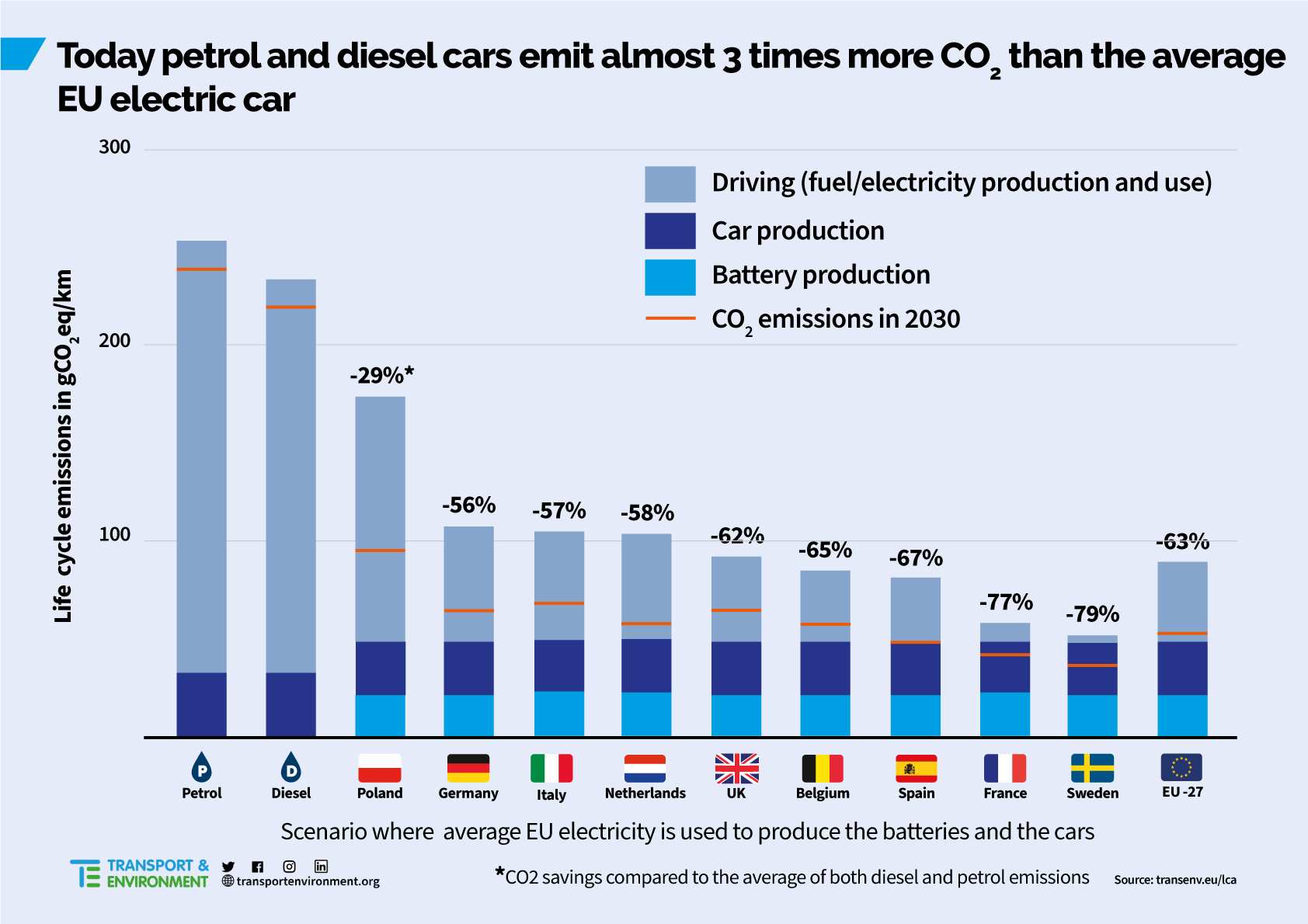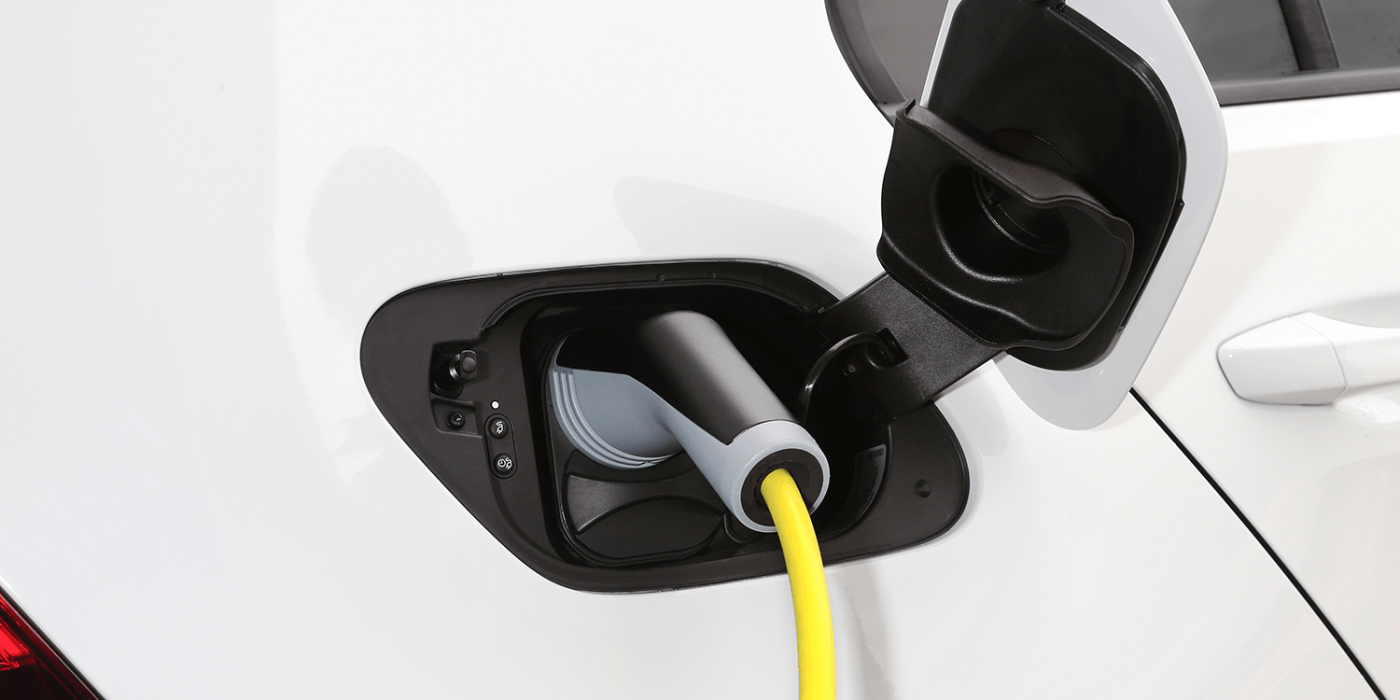T&E finds BEV environmental footprint significantly lower than ICEs
In Europe, an electric car is responsible for almost three times less CO2 over its life cycle than a comparable petrol or diesel car, Transport & Environment has determined and published a corresponding calculation tool.
Even in the worst case scenario, an electric car in Poland with a battery made in China emits 22 per cent less CO2 than a comparable diesel car and 28 per cent less than a gasoline car, according to T&E. The best case, according to T&E, would be an electric car with a battery made in Sweden, if the electric car was also driven in Sweden (i.e. charged with the electricity mix there). In this case, 80 per cent less CO2 was emitted compared to diesel and 81 per cent less compared to petrol.
For the sake of comparability, Transport & Environment has drawn up a scenario for the published graph in which the electric car and the battery were produced using an EU-wide average electricity supply – the CO2 rucksack from production is therefore the same for all countries in the graph. In Poland, with a high proportion of coal-fired electricity used for charging, the CO2 savings are still 29 per cent, while in Germany the figure is 56 per cent. The biggest savings are in France and Sweden with 77 and 79 per cent respectively. On average in the EU, the reduction in CO2 emissions is still 63 per cent.

The tool on the website, with which the values were calculated and interested parties can also calculate the values for different car categories, is currently only designed for battery electric cars. According to T&E, plug-in hybrids and gas-powered vehicles have been excluded by T&E because they are not zero-emission vehicles and would therefore not contribute to achieving climate neutrality quickly. However, T&E is constantly developing the calculator further – for fuel cell vehicles, for example, the researchers still lack reliable data on emissions over their entire service life.
Incidentally, T&E does not use NEDC or WLTP data to calculate CO2 emissions, but an average value of the real emissions of the ten best-selling models per segment in 2018.
The CO2 emissions of the e-vehicles include the emissions from production. According to Transport & Environment, they used IPCC data for this purpose. Here, the emissions from the entire supply chain are to be included, right up to the operation of the mines – i.e. far beyond pure cell production. However, the recycling of batteries has not yet been taken into account because there is no real data from plants on an industrial scale.
Only recently, a study by the universities of Cambridge, Exeter and Nijmegen found that driving an electric car is currently more climate-friendly than driving a gasoline car in 95 per cent of the world.
Both studies, however, focus primarily on CO2 emissions, leaving other pollutants out of the equation. A research team from the Environmental Campus Birkenfeld at Trier University of Applied Sciences led by Eckhard Helmers has investigated this and carried out its own tests and measurements. You can read the results here.
With reporting by Sebastian Schaal, Germany.
transportenvironment.org (Tool), transportenvironment.org (Study as PDF)





0 Comments